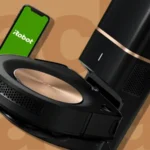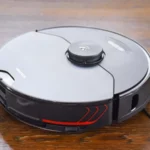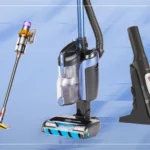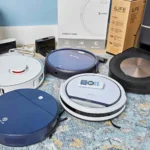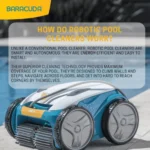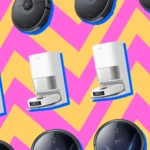Introduction
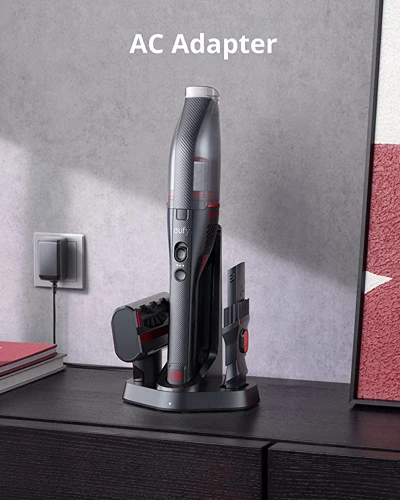
Keeping your smart vacuum cleaner fully charged is crucial if you want it to perform at its best. However, sometimes traditional charging methods might not be available or convenient. This is where alternative charging options come in handy. Exploring different charging options can not only help save you time and hassle, but it can also help extend the life of your device’s battery. In this guide, we’ll dive into some of the most popular alternative charging options for your smart vacuum cleaner battery and provide you with tips and tricks to ensure efficient charging.
Efficient Charging for Your Smart Vacuum Cleaner Battery
When it comes to keeping your smart vacuum cleaner running efficiently, one of the most important factors to consider is efficient charging. Charging your smart vacuum cleaner battery properly can extend its lifespan and help it perform at its best. Below are some tips for efficient charging:
| Tip | Description |
|---|---|
| Avoid Overcharging | Overcharging can damage your battery and reduce its lifespan. Make sure to unplug your smart vacuum cleaner from the charger as soon as it reaches 100%. |
| Keep Battery and Charging Port Clean | Dirt and debris can interfere with the charging process and cause damage to your battery over time. Clean your battery and charging port regularly to prevent buildup. |
| Use Recommended Chargers | Using a non-recommended charger can damage your battery and reduce its lifespan. Stick to the manufacturer’s recommended charging equipment to keep your battery healthy. |
| Charge in a Cool Area | Heat can damage your battery, so make sure to charge it in a cool area. Avoid leaving your smart vacuum cleaner in direct sunlight or near heat sources while charging. |
| Keep Battery at Optimal Charge Level | Keeping your battery charged between 20% and 80% can help extend its lifespan. Try to avoid letting your battery drop below 20% or charge it beyond 80% whenever possible. |
Following these efficient charging tips can help keep your smart vacuum cleaner running smoothly and reduce the risk of damage to your battery. For more tips on how to extend the lifespan of your smart vacuum cleaner battery, check out our article on how to extend smart vacuum battery life.
Alternative Charging Options
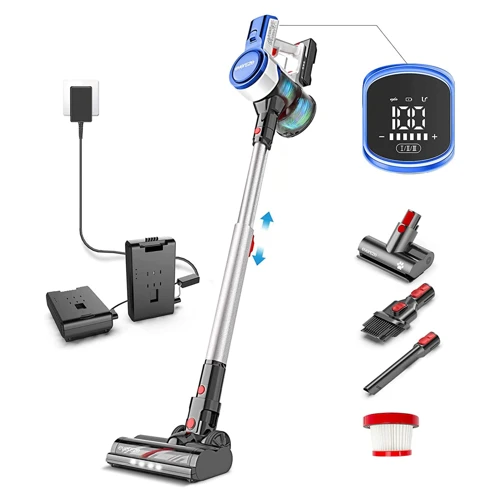
With the increasing popularity of smart vacuum cleaners, finding efficient ways to charge their batteries has become a top priority. While the original charger is a reliable option, there are alternative charging options available that can come in handy when you need to power up your vacuum on-the-go. In this section, we will explore some effective alternatives that can help you charge your smart vacuum cleaner battery. Whether you’re looking to save electricity or need a charging option while traveling, we’ve got you covered. Keep on reading to find out more. And if you want to learn more about smart vacuum cleaner charging tips, such as how to avoid common charging mistakes or how to store your vacuum properly, check out our other articles on smart vacuum cleaner charging cycle, charging smart vacuum tips, smart vacuum original charger, smart vacuum storage tips, and common charging mistakes for smart vacuum.
1. Solar Charging
One of the most eco-friendly and cost-effective charging options for your smart vacuum cleaner battery is solar charging. Here’s how it works:
- Step 1: Get a solar panel charger that’s compatible with your smart vacuum cleaner battery. You can choose between portable or stationary solar panels depending on your needs.
- Step 2: Position the solar panel in a spot with direct sunlight. This can be indoors (near a window) or outdoors (in your yard or balcony).
- Step 3: Connect your smart vacuum cleaner battery to the solar charger using a USB cable. Make sure the cable is in good condition and can handle the voltage from the solar charger.
- Step 4: Allow your battery to charge fully. This may take a few hours or even days, depending on the size of your battery and the strength of the sunlight.
One of the benefits of this charging option is that it’s completely free once you have the solar panel charger. It’s also eco-friendly and can be used anywhere, even in areas without electricity. However, keep in mind that solar panels may not work efficiently in cloudy weather or if they’re not positioned correctly.
If you want to learn more about charging your smart vacuum cleaner battery using alternative methods, check out our article on Alternative Charging Options for Your Smart Vacuum Cleaner Battery.
2. Power Bank Charging
Power banks have become a popular charging option for a variety of mobile devices and gadgets, including smart vacuum cleaners. Instead of plugging your vacuum cleaner into a fixed electrical outlet, you can use a portable power bank to recharge its battery on-the-go. This is especially useful when cleaning larger spaces that require longer battery life.
Here are some factors to consider when using power banks to charge your smart vacuum cleaner:
- Capacity: Power banks have different capacities, which determines how long they can provide power. Check your vacuum cleaner’s battery capacity and choose a power bank with a higher capacity for extended use.
- Compatibility: Ensure that your power bank is compatible with your vacuum cleaner’s battery type and charging port. Using an incompatible charger can damage your device or cause slow charging.
- Charging speed: Some power banks have fast charging capabilities, which can be beneficial for quick recharging during a cleaning session.
- Portability: Choose a power bank that is compact and easy to carry around for convenience.
Here are some tips for efficient power bank charging:
- Avoid extreme temperatures: High temperatures can damage your battery and prevent it from reaching optimal charging level. Do not leave your power bank and vacuum cleaner in direct sunlight or near sources of heat.
- Charge before completely dead: It’s best to recharge your vacuum cleaner before its battery level reaches 0%. This prevents strain and damage to the battery.
- Use the right cable: Ensure that you use the correct cable that came with your vacuum cleaner for charging. If the cable is lost or damaged, use a cable that is compatible with your device’s charging port to prevent damage.
- Avoid overcharging: Do not leave your vacuum cleaner connected to the power bank beyond the required charging time. Overcharging can harm your battery and shorten its lifespan.
Finally, consider the cost of power bank charging. Power banks come in different price ranges, and a higher capacity power bank will typically cost more. However, purchasing a high-quality power bank can save money in the long run by offering extended battery life and preventing the need for frequent replacements.
Power banks are an efficient and convenient charging option for smart vacuum cleaners. However, it’s essential to follow the recommended charging tips and consider the necessary factors when choosing a suitable power bank.
3. Wireless Charging
One of the most convenient ways to charge your smart vacuum cleaner battery is through wireless charging. This technology allows for a hassle-free charging experience as it eliminates the need for cords and cables.
Wireless charging for smart vacuum cleaners works through induction. It involves placing the robot vacuum on a wireless charging pad, and the battery is charged through magnetic induction. The charging pad is plugged into a power source, and when the vacuum cleaner is placed on it, the charging process begins automatically.
Pros of Wireless Charging
There are several benefits to using wireless charging for your smart vacuum cleaner battery, including:
| Pros of Wireless Charging |
|---|
| No Cords or Cables |
| Convenience |
| Safety |
Perhaps the most significant advantage of wireless charging is that you don’t need cords or cables to charge the vacuum cleaner battery. This means that you can avoid the clutter of wires and cords on your charging station, making it look more organized and presentable. Additionally, you won’t have to worry about tripping hazards or cords getting tangled.
Wireless charging is also convenient because the process is automatic. You don’t have to worry about plugging anything in or manually starting the charging process. Once the charging pad is set up and the vacuum cleaner battery needs to be charged, all you have to do is place it on the charging pad, and the process begins automatically.
Wireless charging is also safer than some other charging options, as it eliminates the risk of tripping on cords or cables. This is especially important if you have young children or pets in your home who could be injured by tripping over cords.
Cons of Wireless Charging
However, despite the advantages, wireless charging is not without its disadvantages. Some of the cons of this charging method include:
| Cons of Wireless Charging |
|---|
| Slower Charging Time |
| Less Efficient |
| Higher Cost |
One of the biggest disadvantages of wireless charging is that it typically has a slower charging time than other methods. This is because there are energy losses during the process of magnetic induction, which can result in longer charging times for devices.
Wireless charging can also be less efficient than some other charging options, such as wired charging. This is because some of the energy is lost during the induction process, which can result in lower charging efficiency. Additionally, some charging pads may not be compatible with all smart vacuum cleaner models, and this can cause compatibility issues.
Finally, wireless charging can be more expensive than some other charging options, as the charging pads can be pricey compared to traditional chargers. However, the convenience of wireless charging may justify the cost for some users.
Conclusion
Wireless charging is a convenient and safe way to charge your smart vacuum cleaner battery. However, it has its disadvantages, including slower charging times and higher costs. Ultimately, it’s essential to choose a charging method that works best for you and your needs.
4. Car Charging
Car charging is another alternative option for powering up your smart vacuum cleaner’s battery on-the-go. This option is ideal for individuals who are constantly traveling in their car or van. Car charging is a convenient option, as it allows you to use your car’s battery to charge your smart vacuum cleaner’s battery. However, there are certain factors that you should consider before opting for this charging method.
Pros of Car Charging:
| Benefits | Explanation |
|---|---|
| Convenient | Car charging is a convenient option as it allows you to use your car’s battery to charge your smart vacuum cleaner’s battery on-the-go |
| Cost-effective | This option is cost-effective as you don’t need to buy any additional charging accessories |
Cons of Car Charging:
| Disadvantages | Explanation |
|---|---|
| Battery Drainage | Car charging can drain your car’s battery faster than normal, so it’s important to avoid overusing this option |
| Dependent on Car Battery | This option is dependent on your car’s battery, which means that you may not be able to charge your smart vacuum cleaner’s battery if your car battery is dead or low |
It’s important to keep in mind that car charging may not always be the best option for charging your smart vacuum cleaner’s battery. Depending on your usage patterns and charging requirements, you may need to consider other options such as solar charging, wireless charging, or power bank charging. It’s important to assess the pros and cons of each option and choose the one that’s best suited for your needs.
Charging Tips and Tricks
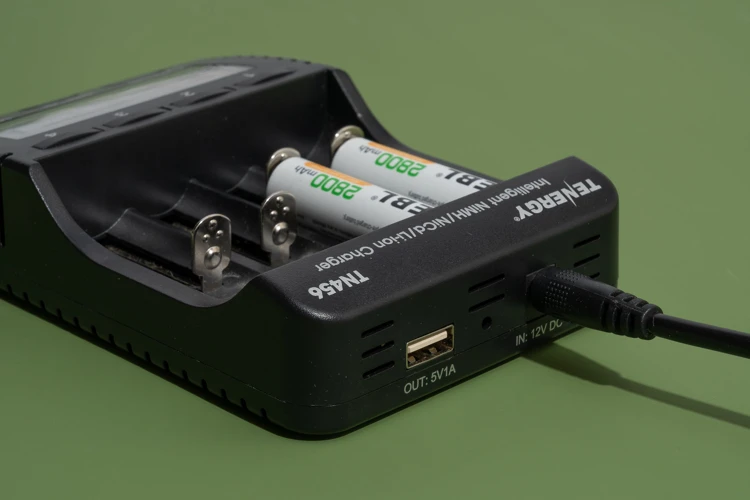
After investing in a smart vacuum cleaner, it’s essential to take care of its battery to ensure optimal performance. However, charging a battery isn’t always as simple as just plugging it in. To help you get the most out of your battery, we’ve compiled a list of charging tips and tricks to keep your smart vacuum cleaner running smoothly. From understanding optimal charging levels to avoiding damage caused by overcharging, these tips will help extend your battery’s lifespan and keep it running efficiently.
1. Avoid Overcharging
Overcharging is one of the common issues that can damage your vacuum cleaner battery, reducing its lifespan and efficiency. It is important to avoid overcharging the battery. Here are some tips to help you do so:
| Tips to Avoid Overcharging your Vacuum Cleaner Battery |
|---|
| 1. Use a timer: Set a timer when you charge your vacuum cleaner battery to prevent overcharging. Most vacuum cleaner batteries take two to three hours to charge, so set your timer accordingly. When the timer goes off, unplug the charger from the power source. |
| 2. Don’t charge overnight: It’s tempting to charge your vacuum cleaner battery overnight, but it’s not recommended. Overcharging can occur, causing your battery to wear out more quickly. Always unplug the charger from the power source once the battery is fully charged. |
| 3. Choose the right charger:Using a charger that is not recommended for your vacuum cleaner battery can damage the battery by overcharging it. To avoid this, only use the charger that came with your vacuum cleaner or a charger that is recommended by the manufacturer. |
| 4. Check the charge level: Always keep an eye on the charge level of your vacuum cleaner battery while it is charging. Once it reaches its full capacity, unplug the charger from the power source to avoid overcharging. Leaving the battery on charge after it has reached its maximum capacity can damage it in the long run. |
By following these tips, you can avoid overcharging your vacuum cleaner battery, prolong its lifespan, and ensure its efficiency to keep your home clean and dust-free.
2. Keep Battery and Charging Port Clean
Keeping your smart vacuum cleaner battery and charging port clean is crucial for maintaining the longevity and efficiency of your charging process. Here are some tips on how to keep them clean:
- Regularly wipe down the battery: Using a dry, soft cloth, gently wipe down the battery to remove any dust or debris that may have accumulated. Avoid using any liquid cleaner or water as it can damage the battery.
- Clean the charging port: Using a soft-bristled brush or a cotton swab, carefully clean the charging port to remove any debris or dirt that may be blocking the connection between the battery and the charger.
- Avoid using a dirty charger: If your charger is covered in dust or dirt, it can transfer that dirt to the battery and charging port. Always make sure to clean your charger before using it to charge your smart vacuum cleaner battery.
- Keep the battery and charging port dry: Water can damage the battery and charging port, so make sure to keep them dry at all times. Avoid charging your smart vacuum cleaner in a wet or humid environment.
By taking these simple steps to keep your smart vacuum cleaner battery and charging port clean, you can ensure that you’re getting the most out of your charging process and helping to extend the life of your device.
3. Use Recommended Chargers
One of the most important factors to consider when charging your smart vacuum cleaner battery is using the recommended charger. This is because different battery models require different charging specifications, and using the wrong charger can damage your battery, decrease its lifespan, or even cause a safety hazard. Here are some tips to help you choose the right charger for your smart vacuum cleaner:
- Check the Manual: The first step is to check the manual that came with your vacuum cleaner to find out the specifications for your battery and charger. Look for the voltage, amperage, and wattage requirements and make sure the charger you are considering matches these requirements.
- Buy from a Trusted Source: Make sure to buy the charger from a trusted source, such as the vacuum cleaner manufacturer, an authorized dealer or a reputable online retailer. Avoid buying cheap, generic chargers as they may not be built to the same standard as a recommended charger.
- Use Original Chargers: Whenever possible, use the original charger that came with your vacuum cleaner. It would be designed specifically for your model, and you will avoid the risk of compatibility issues.
- Be Careful when Replacing: If you have lost your original charger or it has stopped working, make sure to find a replacement that is compatible with your vacuum cleaner model. Avoid buying a charger that claims it will work with all models, as this is unlikely given the unique specifications of each model.
Using a recommended charger is pivotal in ensuring the longevity and optimal performance of your smart vacuum cleaner’s battery. It’s wise to take the extra step to check specifications, choose a reputable source, and whenever possible, stick with the original charger that was designed for your device.
4. Charge in a Cool Area
It is important to charge your smart vacuum cleaner battery in a cool area to avoid overheating and possible damage. Heat can cause the battery to degrade faster, reducing its overall lifespan.
To ensure that you’re charging your battery in the optimal conditions, here are a few tips to follow:
| Tips for Charging in a Cool Area | Explanation |
|---|---|
| Choose a shaded area | Direct sunlight can heat up the battery and cause it to overheat. By charging in a shaded area, you can reduce the risk of overheating. |
| Avoid charging in hot rooms | Rooms that are naturally warmer or have poor ventilation can trap heat and lead to overheating. Choose a well-ventilated room with cooler temperatures. |
| Do not charge the battery immediately after use | Allow the battery to cool down before charging. Charging a warm battery increases the risk of overheating and can reduce the lifespan of the battery. |
| Use a fan or air conditioning to keep the room cool | If you live in an area with high temperatures, keeping the room cool can help prevent overheating of the battery during charging. |
By following these tips, you can ensure that your smart vacuum cleaner battery is charged in a cool and optimal environment, ultimately extending the lifespan of your battery. Remember that charging your battery in cooler conditions not only helps in battery maintenance but also improves its overall performance, which means better cleaning results.
5. Keep Battery at Optimal Charge Level
It is crucial to keep your smart vacuum cleaner battery at the optimal charge level to ensure the best performance and longevity. Here are some tips on how to maintain the optimal charge level:
- Avoid complete discharge: Lithium-ion batteries used in smart vacuum cleaners perform best when kept in a partial state of charge. Completely discharging the battery can harm its lifespan and affect its performance negatively. Make sure to recharge the battery before it completely drains out.
- Charge before long-term storage: If you plan to store your smart vacuum cleaner for an extended period, make sure to charge it to about 50% before keeping it away. This helps prevent overall capacity loss and ensures the battery is ready for use when you need it again.
- Avoid leaving the battery at full charge: When the battery reaches 100% charge, make sure to unplug it from the charger. Leaving it plugged in for extended periods can lead to heating and affect the battery life efficiency.
- Charge in short durations: Charging your smart vacuum cleaner battery in short bursts can help improve battery performance, as it avoids heating of the battery, which can cause long-term damage. Ideally, charge it for 15-30 minutes at a time, and make sure to remove the charger when it’s fully charged.
- Keep an eye on the temperature: The optimal temperature range for charging lithium-ion batteries used in smart vacuum cleaners is between 0 and 45 degrees Celsius. Avoid charging the battery in extreme temperatures as they can result in overheating and reduced battery life.
By following these tips, you can maximize the performance and lifespan of your smart vacuum cleaner battery, ensuring your home stays clean and fresh.
Factors to Consider
When it comes to alternative charging options for your smart vacuum cleaner battery, there are several factors that you need to take into consideration before deciding which method to go for. Choosing the right charging option can be perplexing, especially when there are several charging methods available on the market. However, it’s important to understand the underlying factors that affect the efficiency, cost, and overall performance of your smart vacuum cleaner battery. Here are some of the critical factors that you should consider before investing in an alternative charging option.
1. Battery Type
The battery type is an essential factor that determines the charging options for your smart vacuum cleaner. While most smart vacuum cleaners use Lithium-ion batteries, some older models may still use Nickel-cadmium batteries.
Lithium-ion batteries are more efficient, lighter, and have a longer lifespan compared to Nickel-cadmium batteries. They are also more expensive, but the investment is worth it in the long run since they offer better performance and last longer.
Here is a comparison table that highlights the differences between Lithium-ion and Nickel-cadmium batteries:
| Lithium-ion Batteries | Nickel-cadmium Batteries | |
|---|---|---|
| Efficiency | High | Low |
| Lifespan | Long | Short |
| Weight | Lighter | Heavier |
| Memory Effect | No | Yes |
| Cost | High | Low |
Memory effect is a phenomenon where a battery “remembers” its charge level if it is repeatedly charged before it is fully discharged. This results in a loss of battery capacity over time.
Lithium-ion batteries are the better option for your smart vacuum cleaner since they offer better efficiency, longer lifespan, and are lighter. However, it’s essential to confirm your battery type and recommended charging options from your manufacturer to ensure optimal performance and prevent any damage.
2. Charging Time and Efficiency
When it comes to charging your smart vacuum cleaner battery, charging time and efficiency are two important factors to consider. Here are some points to keep in mind:
- Charging time: The charging time for your smart vacuum cleaner battery will vary based on the charging option you choose. For instance, wireless charging may take longer than direct charging with a power bank. It’s important to note that charging times may also be influenced by the level of battery depletion.
- Efficiency: Along with charging time, efficiency is also an important aspect to consider. Some charging options may be more efficient than others, meaning they can charge your battery more quickly and fully. For instance, while solar charging may be environmentally friendly, it may not be the most efficient option for charging your smart vacuum cleaner battery.
- Factors influencing charging time and efficiency: There are various factors that will influence the charging time and efficiency of your smart vacuum cleaner battery. Some of these include the battery size, capacity, and age, as well as the quality of the charging option you choose. It’s important to research the various charging options available and compare their charging times and efficiency ratings before making a decision.
Considering the importance of charging time and efficiency, it’s crucial to choose a charging option that not only meets your needs but also ensures that your smart vacuum cleaner battery is always ready to go. Keep in mind that charging times and efficiency ratings may vary based on your specific battery type, so it’s always a good idea to check the manufacturer’s recommendations for the best charging practices.
3. Cost of Charging Options
When considering alternative charging options for your smart vacuum cleaner battery, it’s crucial to take cost into account as well. Here are some cost-related factors to consider for each option:
- Solar Charging: While the initial investment for solar panels can be high, once you have them installed, solar charging is essentially free as long as the sun is shining. However, if you live in an area with limited sunlight, this may not be the most cost-effective option for you.
- Power Bank Charging: Power banks vary in cost depending on their capacity and brand. Generally speaking, a higher capacity power bank will cost more, but it will also provide more charges for your vacuum cleaner battery. It’s important to note that using a power bank as your primary charging option may result in higher long-term costs than other options due to the need to replace the power bank itself every few years.
- Wireless Charging: While convenient, wireless charging pads or stations can be pricey. Additionally, not all smart vacuum cleaners are compatible with wireless charging technology, so you may need to purchase a separate wireless charging accessory or upgrade your vacuum cleaner to take advantage of this feature.
- Car Charging: The cost of car charging will depend on your mode of transportation and how frequently you need to charge your vacuum cleaner battery. If you have a car, charging your vacuum cleaner while driving can be a great option, especially if you frequently use your vacuum cleaner to clean your car as well. However, if you don’t have a car or rarely drive, this may not be the most practical or cost-effective option.
It’s important to consider your personal budget and charging needs when choosing an alternative charging option for your smart vacuum cleaner battery. While some options may have higher upfront costs, they could be more cost-effective in the long run if they provide free or significantly cheaper charging over time.
Conclusion
As you explore the various alternative charging options for your smart vacuum cleaner battery, it’s important to weigh the various factors and prioritize what works best for your unique situation. While solar, power bank, wireless, and car charging can all be viable options, there are certain considerations to keep in mind. By following some simple charging tips and tricks and taking into account battery type, charging time and efficiency, and cost, you can choose the best charging option for your needs. Let’s take a closer look at the factors to consider and how they can impact your decision-making process.
Best Charging Option for Your Smart Vacuum Cleaner Battery
After considering various factors, the best charging option for your smart vacuum cleaner battery may differ depending on your individual needs and preferences. However, the following table outlines some of the pros and cons of the alternative charging options mentioned above.
| Charging Option | Pros | Cons |
|---|---|---|
| Solar Charging | – Environmentally friendly and cost-effective in the long run. – No electricity bill or need for power outlets. – Portable and convenient, especially for outdoor use. |
– Dependent on weather and sunshine. – Initial setup and investment cost may be high. – Not suitable for everyday use or quick charging needs. |
| Power Bank Charging | – Portable and convenient, can be used on-the-go. – No need for power outlets or cords. – Comes in various sizes and capacities. |
– Limited battery life and capacity, may not fully charge larger batteries. – May need to purchase additional power banks for regular use. – Some power banks may be heavy and bulky. |
| Wireless Charging | – Convenient and easy to use. – No need for cords or power outlets. – Can charge multiple devices at once. |
– Slower charging time compared to wired charging. – May not be compatible with all devices. – More expensive than wired chargers. |
| Car Charging | – Convenient for traveling or long drives. – No need for power outlets or cords. – Can charge other devices in the car. |
– Limited charging time and capacity. – Requires a car adapter or charger. – May not be suitable for everyday use. |
It’s important to evaluate your own needs and preferences when considering which charging option is best for you. Keep in mind the battery type, charging time and efficiency, and cost of each option. Additionally, always follow the recommended charging tips and tricks to prolong the lifespan of your smart vacuum cleaner battery.
Frequently Asked Questions
Can I use a regular phone charger for my smart vacuum cleaner battery?
It’s best to use the recommended charger for your smart vacuum cleaner battery to ensure optimal charging efficiency and to avoid damaging the battery.
Can I charge my smart vacuum cleaner battery using a USB port?
It depends on the smart vacuum cleaner model and the specifications of the battery. Some smart vacuum cleaners come with a USB charging cable, while others require a specialized adapter.
How long does it take to fully charge a smart vacuum cleaner battery?
The charging time varies depending on the battery capacity and the charging method used. Generally, it can take anywhere from 2 to 5 hours to fully charge a smart vacuum cleaner battery.
Is it safe to charge my smart vacuum cleaner battery overnight?
Avoid leaving your smart vacuum cleaner battery plugged in overnight to prevent overcharging, which can damage the battery and reduce its lifespan. Instead, unplug the charger once the battery is fully charged.
Can I charge my smart vacuum cleaner battery using a solar panel?
Yes, solar charging is a viable option for charging smart vacuum cleaner batteries. However, it requires a high-power solar panel, so check the battery specifications to ensure compatibility and optimal charging efficiency.
What is the best way to extend the lifespan of my smart vacuum cleaner battery?
Avoid overcharging or completely discharging the battery, charge it in a cool area, and use the recommended charger. Regularly cleaning the battery and charging port can also help maintain optimal charging efficiency and extend the battery lifespan.
Can I charge my smart vacuum cleaner battery in my car?
Yes, you can use a car charger adapter to charge your smart vacuum cleaner battery while on the go. However, make sure the charging voltage and amperage are compatible with your battery specifications to avoid damaging the battery.
Is wireless charging a viable option for smart vacuum cleaner batteries?
Yes, wireless charging pads are available that are compatible with smart vacuum cleaner batteries. However, the charging efficiency is lower than with other charging methods, and it may take longer to fully charge the battery.
What is the optimal charge level for my smart vacuum cleaner battery?
The optimal charge level for smart vacuum cleaner batteries is typically between 30% and 80% to maintain the battery’s lifespan and optimal charging efficiency.
Can I use a third-party charger to charge my smart vacuum cleaner battery?
It’s best to use the recommended charger for your smart vacuum cleaner battery to ensure compatibility and optimal charging efficiency. Using a third-party charger may damage the battery or result in slower charging times.

